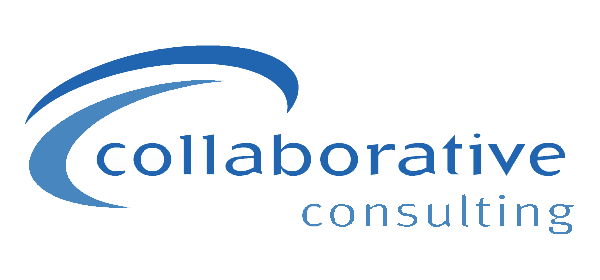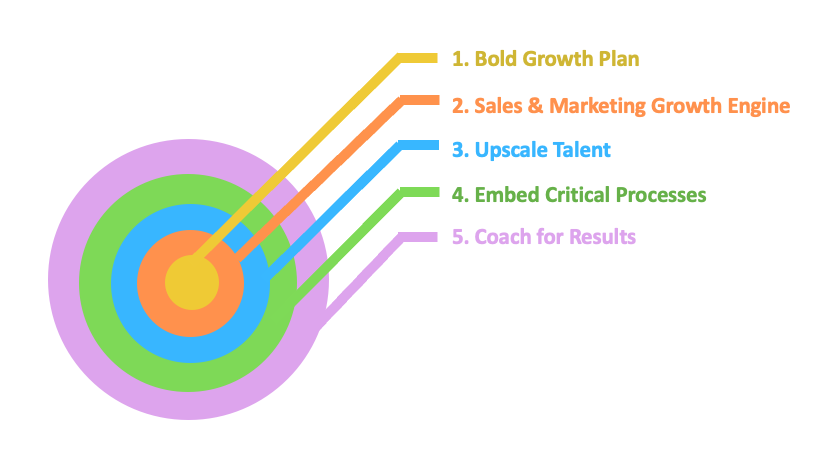Leading a Step Change in Growth: Coach for Results
Coaching, the fifth element in the Leading a Step Change in Growth series, allows us to fully implement a bold growth plan.
We encourage you to formalize your coaching process by designing a monthly platform that enhances two-way communication to elevate performance and support personal development. Coaching is a commitment to your people that pays big dividends. It is about setting a high bar focused on results and showing that you care about your people’s personal success. Emphasizing you are all on the same winning team and holding your team accountable to cascade coaching to the next level in the organization is critical.
We recommend you set up a coaching program focusing on three key areas that we will briefly discuss in the remainder of this post
- Growth Milestones
- Growth Metrics
- Key Skills
Four Tips for Leaders Coaching Direct Reports for Step Change Growth
1. Coach to Key Growth Milestones
Coaching to milestones is different than coaching to goals alone. When we talk about coaching to milestones we are talking about coaching to specific short term markers that help you to progress to getting to your ultimate goal. This is an important distinction because coaching to goals without understanding the steps and markers along the way to get to the destination can cause people to easily lose their way.
Milestones are a way to help people to keep their eye on the final destination (goal) and motivate them to keep moving as they achieve small wins along the way. A great example of this would be an initiative or goal to set up an inside sales function in your organization where you map out the specific milestones that need to happen to get there.
2. Coach to Key Metrics
Coaching to key metrics allows you to measure how well things are going toward achieving the business objective. Starting at the highest level of the organization, identifying what is most important to focus on to evaluate organizational performance and achieve the strategic objectives is key. These are then trickled down to each function and individual, defining what success looks like. Establishing metrics based on how they can contribute to achieving the company objectives is critical. Metrics can be numerical as well as behavioral in nature.
Coaching using the metrics defined at the functional and individual level allows you to evaluate progress.
3. Coach to Key Skills (e.g., sell based on value, project management)
In addition to coaching monthly on milestones and using metrics to evaluate performance, understanding the skills and behaviors that are required and where there are potential gaps is just as important. A great example is a functional leader who has responsibility to work across the organization to implement a CRM system. While the milestones and the metrics may be well defined, there is a need for strong project management skills to be successful. Making sure that everyone is aligned, managing the project milestones, collaborating across functions and staying on budget are all areas that require coaching.
4. Monthly Discussions and Dashboards
Consistency and focus on the key objectives in coaching sessions drives enhanced performance and personal development. Establishing a monthly cadence to coach and mentor direct reports is one of your most important priorities.
Visualizing milestones for each key goal or objective is critical to track and communicate progress. Using a consistent format for looking at and evaluating results motivates people and teams to do their best!
Thank You for Engaging & We Are Here if You Need Us
In closing, coaching is a commitment to your people that pays big dividends. Showing that you care about your people’s personal success and setting a high bar focused on results is critical in implementing and elevating your bold growth plan.
How could you leverage coaching?
Building a bold growth plan by putting in place these 5 key puzzle pieces helps you attract and retain top level talent, and creates a great place and culture to work.
We hope that the concepts and insights in these posts are beneficial to both your business and your team’s growth mindset. Thank you for engaging with us, we would love to hear about your progress.
All my best,
Julie LaNasa
Founder – Collaborative Consulting
Previous posts in the Leading a Step Change in Growth series:
- 1: Building a Bold Growth Strategy
- 2: Creating Your Sales and Marketing Growth Engine
- 3: Upscaling Talent
- 4: Embedding Critical Processes






